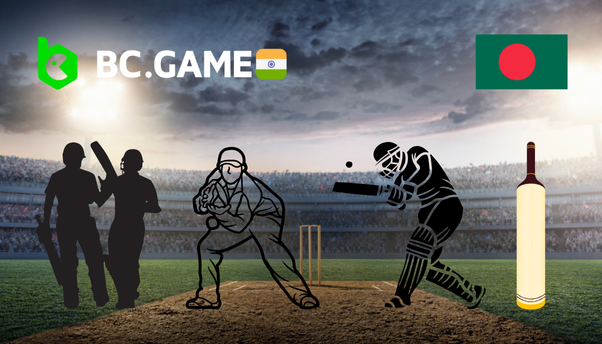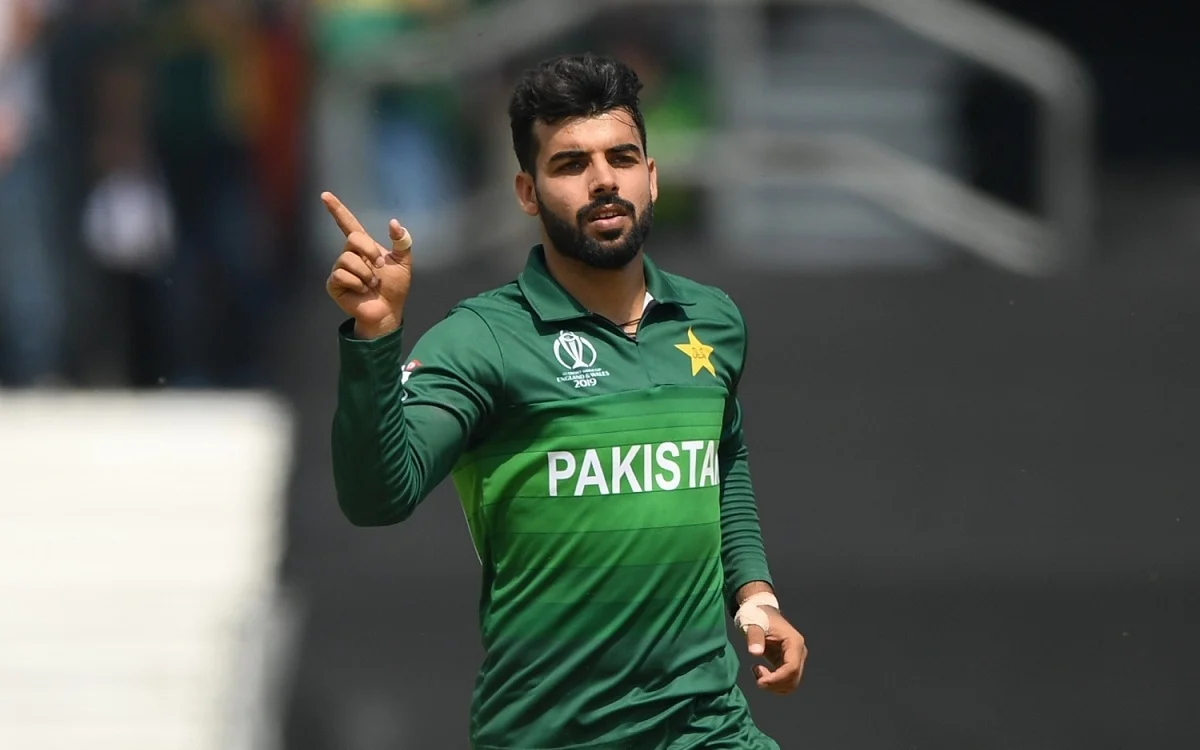Overview of India’s sports industry
The Indian sports industry is a unique and potent mix of tradition and technology that is growing at breakneck speed, with a myriad of career options. Crossing the spectrum between cricket, which remains India’s most popular sport, and the new wave of sports franchises being created in kabaddi and eSports. Platforms like bcgames-india.com are helping […] The post Overview of India’s sports industry appeared first on Ten Sports TV.

The Indian sports industry is a unique and potent mix of tradition and technology that is growing at breakneck speed, with a myriad of career options. Crossing the spectrum between cricket, which remains India’s most popular sport, and the new wave of sports franchises being created in kabaddi and eSports.
Platforms like bcgames-india.com are helping to drive this shift, offering innovative solutions and experiences in the gaming sector. By addressing all the problems, adopting new technologies, and fostering innovation, India can create a new ecosystem where sports become cultural pride and an economic growth engine for the country.
Evolution of sports in India
India is a country with a rich and diverse culture and history. Games such as kabaddi, kho-kho, and wrestling were not mere pastimes but significant in binding community relationships and keeping the body fit and fine.
Cricket, football, and hockey were western sports that became rooted in Indian culture when they were introduced ages ago during the time of colonial rule. Today, the excitement around cricket continues to grow, with events like mega cricket world capturing the attention of fans across the nation.
Historical significance of sports in India
Sports have historically been a pillar of Indian cultural and social identity. Traditional games like kabaddi and kho-kho, which have their roots in the history of the nation, signify community spirit and the spirit of togetherness.
Colonial rule saw the introduction of Western sports, which contributed to the emergence of an identity in India. After independence, sports emerged as a unifying force, celebrating national pride and fostering global achievement, demonstrating India’s capabilities to the world.
Popular sports and their cultural influence
Cricket, introduced during British rule, was turned into much more than a sport; it became a cultural phenomenon that united a country. The IPL, and similar events, bring millions together and can create national pride and bridge societal divides.
Fans eagerly track every moment of the game, often checking the India National Cricket Team vs India National Cricket Team match scorecard to stay updated on the action. These sports not only preserve India’s culture but also bridge urban and rural communities, reaffirming their timeless significance.
Current scenario of the sports sector in India
With an annual growth rate of 14%, India’s sports sector is on a fast-upward trajectory that is expected to reach $130 billion by 2030. Factors leading to this growth include increased government investment, encompassing digital adoption, and new multi-sport audiences emerging outside cricket.
Events like the Cricket World Cup live coverage continue to capture the nation’s attention, fueling this upward trend and expanding the reach of sports beyond just cricket.
Key achievements and global presence
Over the years, the Indian sports ecosystem has achieved many milestones, and in 2023, with a record 107 medals, including 28 gold medals, India had its best-ever performance at the Asian Games held in Hangzhou. This historic achievement spanned a range of fields, including athletics, wrestling, shooting, badminton, and boxing, drawing attention to India as a surging athletic power.
At the international stage, Indian sportsmen and sportswomen have made historic advancements, such as Neeraj Chopra’s Olympic gold in javelin and the Indian hockey team’s bronze 41 years after its last medal, indicating a revival of national pride and competitive spirit.
Growth of domestic leagues and tournaments
The rise of professional leagues of all types across India has changed the landscape of sports in the country. The Indian Premier League (IPL), which began in 2008, played a part in the financial boom and has influenced the growth of other sports like kabaddi, badminton, and football.
These leagues have helped raise the profile of their respective sports and offered stages for local talent to shine on. For instance, leagues like the Pro Kabaddi League have not just rekindled interest and viewership but also attracted sponsorships, creating economic growth in the sports industry.
Challenges faced by the sports industry
The sports industry in India faces a number of challenges that prevent its progress and international competitiveness. Fund mismanagement and insufficient infrastructure starve talent from rising. These problems are compounded by the fact that cultural attitudes often prioritize academics over sports, hampering attempts to nurture a vibrant and well-rounded sporting culture.
Inadequate infrastructure and facilities
In India, the sports infrastructure is still a major issue. Poorly maintained venues are unsafe and uninviting for athletes. Such neglect makes it difficult for a robust sports ecosystem to be in place and therefore discourages participation at all levels.
This challenge is compounded by the disproportionate distribution of facilities in favor of urban areas over rural ones. Such areas are often full of underutilized talent but lack the support to help them grow at a grassroots level. This imbalance hinders the opportunities for younger athletes and limits the country’s standings in the global stage.
Financial and sponsorship constraints
India’s sports sector faces a stark contrast in financial support and sponsorship distribution, with cricket receiving the lion’s share while other sports struggle for resources. The table below reflects the contrast in funding distribution, promotion of the sport, and athlete support in cricket as compared to the non-cricketing spectrum.
| Aspect | Cricket | Non-Cricket Sports |
| Funding Allocation | High, supported by major brands | Limited, reliant on government aid |
| Sponsorship Focus | Over 80% of sports sponsorship | Less than 20% of sponsorship |
| Athlete Support | Robust training and global exposure | Inconsistent opportunities |
| Media Coverage | Extensive, high visibility | Limited, niche audiences |
Lack of grassroots development
India’s sports ecosystem is severely impacted by the lack of grassroots programs, which limits the talent pool for international competitions. This shortfall is rooted in inadequate infrastructure, a scarcity of trained coaches, and insufficient community engagement. Without these foundational elements, young athletes struggle to maximize their potential.
Further compounding the issue is the societal focus on academics over sports that has hindered the opportunity of many of our youth to participate in sporting activities. This causes many budding athletes to lose that critical early fair share of growth and builds India’s non-competing nature on the global stage. As such, addressing these shortcomings is key to developing a robust sports culture.
Gender disparity in sports participation
The issue of gender disparity still remains a major challenge in the sporting ecosystem in India. This is alarming, as a 2020 study done by the BBC mentioned that only 29% of Indian women engage in sports compared to 42% of men.
One of the biggest reasons for this gap is societal norms and restricted access to facilities for women. Such discrimination greatly hinders opportunities that could help women athletes realize their ultimate potential and win medals for India.
Governance and administrative issues
Governance and administrative shortcomings pose another challenge for the development of the sports industry in India. There is a lack of synergy and coordination, as many organizations, such as the Ministry of Youth Affairs and Sports, the Indian Olympic Association, and national federations, may result in fragmented efforts and policy implementation.
In addition, systemic problems such as corruption, financial mismanagement, and the absence of professionalization also prevent progress. Such issues do not only hold back athlete development but undermine public trust in sport governing bodies as well. A needs-based transparent and streamlined governance structure would be critical to revitalize the ecosystem of Indian sports.
Opportunities for development in Indian sports

The potential is immense in the Indian sports sector with a combination of government spending and private investment. India is on its way to becoming a global powerhouse. Plus, investment in sustainable infrastructure, grassroots efforts, and the integration of digital technology continue to pay off. Such developments promise economic growth and success in sports for all.
Expanding interest in non-traditional sports
While football, kabaddi, and badminton are becoming increasingly popular, there is a concerted effort to move away from the perception that India is a cricket-crazy country. The likes of ISL and Pro Kabaddi League have elevated the status of these sports, attracting sponsorships and boosting viewership.
Besides, corporate investments, increasing media attention, and better training facilities have fueled that diversification. More athletes, more fans, more leagues, more tournaments.
Digital transformation and sports technology
India’s sports ecosystem is being transformed by the digital revolution, which is melding technology with tradition. Advanced technologies like Artificial intelligence (AI) and data analytics are streamlining athlete performance in valuable ways, providing real-time insights that have immediate effects on coaching, training, and strategy.
The Indian cricket team, for instance, leverages analytics to finalize the game plan and track fitness. As we approach the T 20 Cricket World Cup 2024, these innovations will play a key role in enhancing the team’s preparation.
Emergence of private leagues and brands
Private leagues have redefined India’s sports landscape, infusing professionalism and economic viability into various disciplines. The Indian Premier League (IPL) set the benchmark, inspiring similar ventures in football, kabaddi, and badminton.
Besides, corporate investments and brand involvement have significantly enhanced infrastructure and athlete compensation, raising the overall quality of sports entertainment.
Untapped potential in rural and tier-2 citie
Tier-2 cities and rural regions of India are reservoirs of latent sporting talent waiting to be mined. However, these areas face challenges such as inadequate infrastructure and limited access to training facilities, restricting grassroots development.
Programs such as Khelo India are trying to address this issue, pushing the sport to the grassroots level. Long-term investment in such regions will lead to the emergence of new athletes and also help in bringing up underdeveloped regions of the nation and their contribution towards the sports of the country.
Sports tourism and international events
India is rapidly becoming a dynamic growth market for sports tourism, drawing crowds from across the country and abroad to major events. India is proving itself to be a globally attractive destination, with the ICC Men’s World Cup 2023 putting this expansive nation at the global forefront in hosting premier world events.
The excitement around live cricket matches, especially during such high-profile events, continues to draw millions of viewers. Besides, the contribution of events such as the IPL and Pro Kabaddi League in providing a major boost to the local economies, cultural exchange, and promotion of India on the global stage is tremendous.
Strategies for enhancing the sports ecosystem

A comprehensive strategy is essential to strengthen India’s sports ecosystem. When done correctly, sports infrastructure can be part of sustainable urban planning for the allocation of resources and community involvement.
Public-private partnerships (PPP) are also important and help in ensuring funds to support initiatives that maintain grassroots programs and ensure the relaxation of a sports culture.
Role of government policies and reforms
Government initiatives are vital in the advancement of the sports sector in India. Grassroots development of sports and components like the Khelo India Programme, which identifies and promotes talent at the grassroots, are key.
Additionally, the Target Olympic Podium Scheme (TOPS) offers specialized training to athletes with medal-winning potential, boosting India’s presence on international platforms. Such policies are built towards an ecosystem that incentivizes participation and excellence.
Corporate investment and public-private partnerships
Corporate investment has transformed Indian sports. Sponsorship of events, teams, and athletes has also professionalized sports infrastructure and disciplines such as football, kabaddi, and badminton, making them more attractive.
This growth was further energized by public-private partnerships that combined the resources of the government with the efficiency of the private sector. These partnerships have resulted in the development of best-in-class facilities and training programs, thus nurturing talent and greatly enhancing India’s performance at global platforms.
Strengthening talent identification and training systems
Innovative ways have emerged in the Indian sports sector to strengthen talent identification. Data analytics and artificial intelligence are deployed to scout and bring to the ground grassroots talent through initiatives like the Khelo India Rising Talent Identification (KIRTI) Programme.
Collaborations with other nations also make a huge difference. Such partnerships enrich India’s talent pool, paving the way for a more competitive and globally recognized sports presence.
Conclusion
India’s sports industry is at the brink of transformation with the perfect blend of traditions and technologies. Conquering barriers such as accessibility and inclusivity will open up new frontiers, enabling athletes and fostering cohesive sportsmanship.
With increased investment and the strengthening of grassroots programs, the future of Indian sports is bright. By embracing change and innovation, the industry can pave the way for a globally recognized sporting powerhouse that resonates with every citizen’s aspirations.
The post Overview of India’s sports industry appeared first on Ten Sports TV.







-1.jpg?#)



